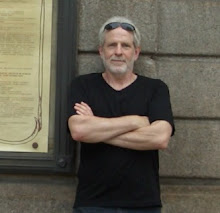
I've been fortunate in my life to have had several encounters with the rich, famous, and infamous. I've eaten Chinese food with Joseph Heller, bumped into Abe Vigoda on 3rd Avenue, and was running camera on a late-night Boston TV show when the late Wendy O. Williams of the Plasmatics pulled her top down on air. None of these, however, has had the lasting impact of my encounters with Professor Allan Cormack.
I was a student at Tufts University School of Engineering in the late sixties, and I use the term "student" in the loosest way possible. I was convinced that my youthful fascination with tinkering and taking objects apart made me well-suited for the program. Given my inability to ever reassemble said objects, this was perhaps a bit presumptuous. The curriculum for all freshman engineering students included an introductory physics course in Newtonian mechanics which was taught by Dr. Cormack in the fall of 1967.
Almost immediately, I ran into problems - linguistic, ophthalmic, and sociological - none of which were the fault of the professor. I was assigned to a lab group where the instructor had an accent so thick and indecipherable, he might as well have been speaking Romulan. Maybe he was. All I know is that it took most of the first session to figure out that an "offapackle" was an alpha particle, and by then, I had already bungled the experiment.
In those halcyon pre-Hewlett-Packard days, all experimental data and statistical evaluation was calculated using a slide rule, an ingenious but complicated device as common today as a chariot on the interstate. For those of you too young to remember, it was an adjustable ruler with multiple scales and a cursor that you manipulated to perform various math functions. Given the infinitesimal size of the scale markings and my abysmal eyesight, it was as useful to me for computation as a chainsaw for embroidery.
In spite of my empirical ineptitude, I enjoyed the lectures and had a good grasp of the theory, until the moment a girl with great legs and a penchant for short skirts started sitting next to me. I spent the rest of the semester in a R-rated reverie while the voice of one of the century's great minds drifted like faint Muzak in the background. Before Tufts, I had attended an all-male boarding school, and my social graces weren't fit for a Tijuana Bordello.
After three torturous semesters, it was obvious that I wasn't cut out for engineering, but in my clueless egomania, I blamed the subject. The problem was that I was clearly too abstract a thinker for such a practical field. Despite mediocre grades, I decided to become a theoretical physicist. I met with Dr. Cormack who was the department chairman, and switched my major. In retrospect, that was the task I really excelled at.
I don't remember much from that first meeting, except that he was a kind, down-to-earth man who didn't laugh in my face outright as he might have considering my qualifications. We talked about the curriculum, and he suggested I enroll in his course on advanced electricity and magnetism for the next semester. It was at this point that my tobacco jones got the best of me. I asked for one of his cigarettes which he graciously provided and lit. For anyone correlating Nobel laureates with their preferred cigarette brands, Dr. Cormack smoked Parliaments.
Advanced E and M turned out to be the most difficult course of my academic career. It was only through his superhuman patience that I wasn't KO'ed by Maxwell's equations, and could get up off the canvas to earn a respectable B. But I had stretched my science brain as far as it would go, and I knew I would never make it to my degree that way. I swallowed my pride and told him I was switching my major to English. As before, he was understanding and non-judgmental, and he wished me well. He also let me bum another smoke.
Dr. Allan Cormack was a co-recipient of the Nobel Prize for Medicine in 1979 for the theoretical work behind CT scanning. He died in 1998. It was my honor and privilege to know him.

No comments:
Post a Comment